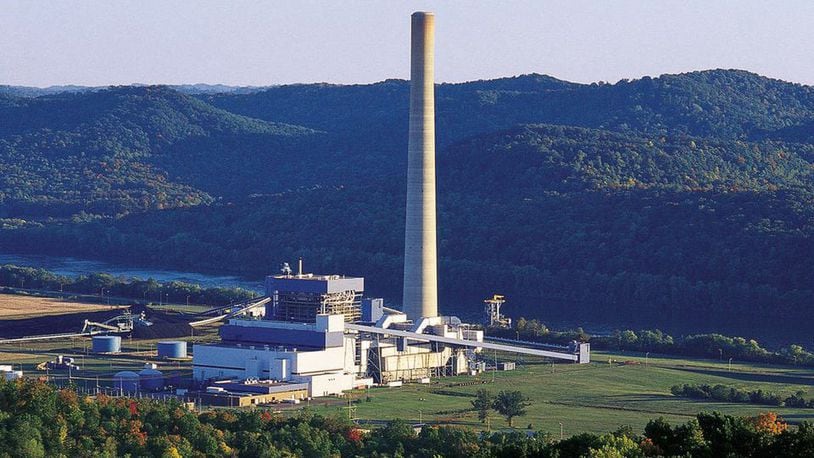The EPA said the plan exceeded the agency’s statutory authority and created “unnecessary regulatory burdens.”
RELATED: Ohio community fights proposed DPL coal plant closures
“The Obama administration pushed the bounds of their authority so far with the CPP that the Supreme Court issued a historic stay of the rule, preventing its devastating effects to be imposed on the American people while the rule is being challenged in court,” Pruitt said. “We are committed to righting the wrongs of the Obama administration by cleaning the regulatory slate. Any replacement rule will be done carefully, properly, and with humility, by listening to all those affected by the rule.”
Energy providers and environmental activists are watching carefully.
RELATED: DP&L will move local jobs to Argentina
Louis Renjel, vice president of federal government affairs and strategic policy for Duke Energy, said his company is looking for more information about the next steps.
“The Clean Power Plan as finalized raised significant legal and implementation questions,” Renjel said. “We appreciate EPA taking these challenges into account as the agency begins the public process of considering a replacement rule.
“As we have long said, clarity and certainty around the rules are critically important as we make investments to ensure continued safety, reliability and affordability for our customers. We will continue to work constructively with policymakers to achieve that,” he added.
RELATED: DP&L tells 300 workers: You have a new employer
A spokeswoman for Dayton Power and Light (DP&L) said: “EPA has not yet released a proposed rule and it is too early to determine any potential implications.”
The Trump Administration’s move had been widely expected, and activists were critical in response.
“We had a Clean Power Plan,” David Doniger, a director with the National Resources Defense Council (NRDC), wrote in a blog. “What we’re getting is a dirty power plan.”
Other NRDC analysts said that carbon emissions from power plants dropped last year to their lowest levels since 1988.
“The Clean Power Plan reinforces and builds on these market trends by embracing the kind of flexible strategies that the industry already employs,” wrote Kevin Steinberger and Starla Yeh, both analysts with the NRDC.
In regulatory filings earlier this year, DP&L has indicated it intends to close its Stuart and Killen coal plants — two coal-fired generation stations in Adams County, near the Ohio River — by mid-2018.
In Washington, Ohio lawmakers staked out partisan positions.
Rep. Pat Tiberi, R-Genoa Twp., said he hoped the EPA and Congress would take a more “commonsense” approach to environmental protection that would not increase energy costs.
“America needs an energy strategy that supports our economy, creates jobs and bolsters our independence,” he said. “The Clean Power Plan Rule, another example of President Obama’s executive overreach, clearly missed the mark. I’ve long advocated for its repeal and I applaud the Trump administration’s decision to do so.”
Rep. Bill Johnson, R-Marietta, also praised the decision by President Donald Trump and his environmental team.
“EPA Administrator Pruitt understands that the so-called “Clean Power Plan” an unconstitutional executive order from the previous administration — - attacked hard working families and would not have a meaningful impact on global carbon emissions,” said Johnson, a member of the House Energy and Commerce Committee and whose district includes much of the state’s coal country.
Emily Benavides, a spokeswoman for Sen. Rob Portman, R-Ohio, said he has opposed the Clean Power plan because it “would have resulted in higher electricity prices and lost jobs in Ohio.
“Rob believes that Congress should work together to both reduce carbon emissions and protect American jobs,” she said.
Sen. Sherrod Brown, D-Ohio, said the decision would do little to protect the coal miners that Trump vowed to protect during the campaign.
“This is something for the coal companies and little for the coal miners,” he said, adding that if Trump “wants to show support for coal, he should work with us to fix the pensions system for coal miners.”
Brown and others have been arguing in support of a bill that would shore up the 1974 United Mine Workers Pensions Plan, which currently faces insolvency.
Rep. Tim Ryan, D-Niles, called the decision “very disappointing,” saying that “the future of our economy and the future of manufacturing rests in our ability to convert to renewable energy.”
“We have got to get out of the mentality of digging stuff out of the ground or pumping stuff out of the ground to burn it for a middle class that will increase by 3 billion more people and think somehow it’s going to be good,” he said. “It is not a long-term solution for a president to have the worldview that somehow we’re going to be able to go back to 1940 and 1950 when everything in the world has changed.”
A spokeswoman for AEP said the company supports a replacement for the Clean Power Plan.
“Our long-term strategy includes adding a significant amount of new renewable energy and natural gas generation that will help keep costs low for our customers and allow us to diversify our fuel mix, regardless of the outcome of the Clean Power Plan,” said Tammy Ridout, a spokeswoman for the company. She said the company has cut carbon dioxide emissions by 44 percent since 2000 and will reduce emissions further as they transition to cleaner energy.
Jessica Wehrman of the Washington Bureau contributed to this report.
